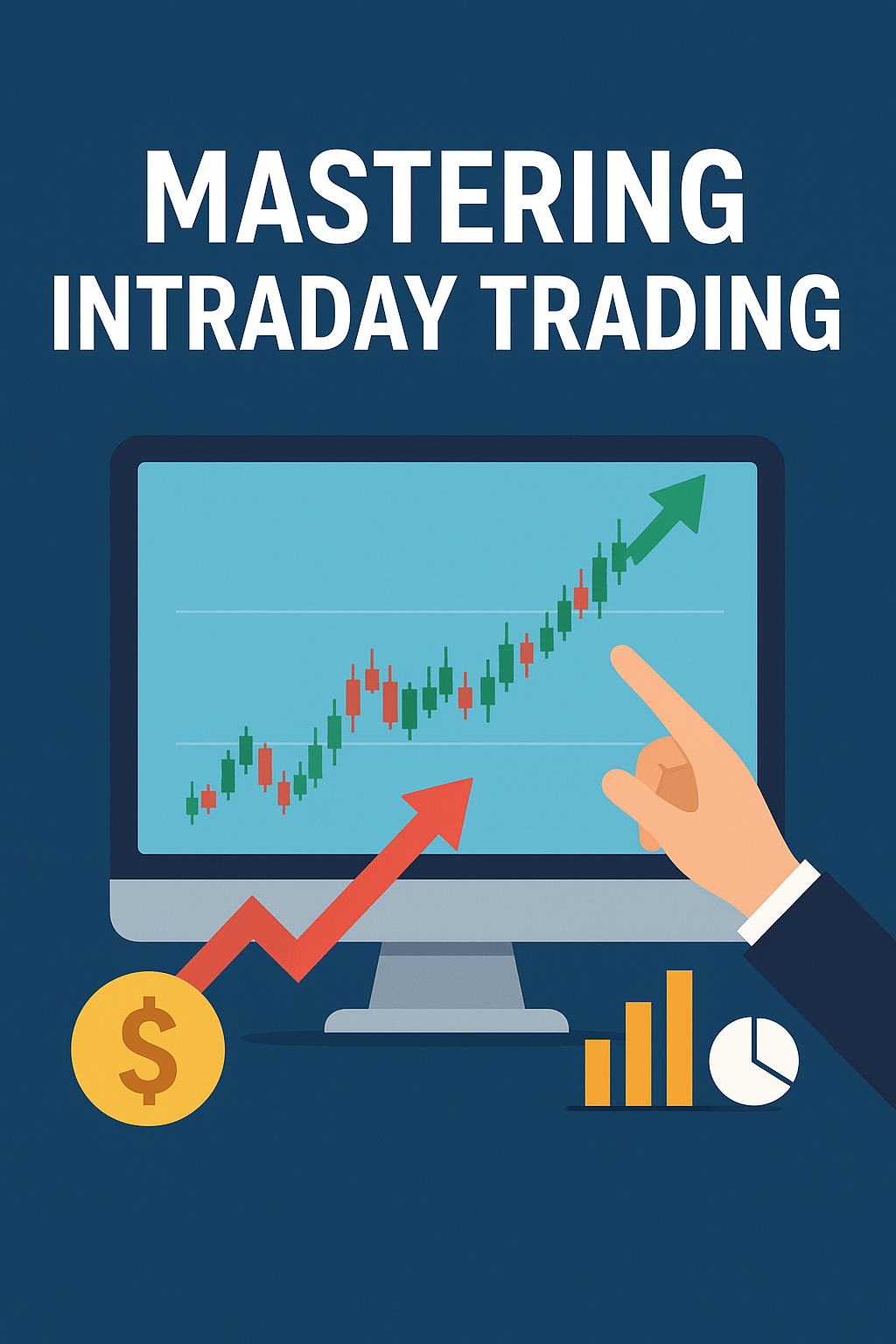Mastering Intraday Trading: Essential Tips and Tricks

Mastering Intraday Trading: Unlock the secrets of successful intraday trading with our expert tips and strategies.
Trending News Fox, “Fast. Fierce. First on the Story.”
Digital Desk Team, Kolkata
Edited by Saibal Bose
📘 Mastering Intraday Trading: The Ultimate Guide to Daily Market Profits
Table of Contents: Mastering Intraday Trading
- Introduction to Intraday Trading
- Understanding Stock Market Basics
- Key Tools Every Intraday Trader Needs
- Candlestick Patterns & Chart Reading
- Technical Indicators That Work
- Developing Your Trading Strategy
- Risk Management & Position Sizing
- Trading Psychology – The Mind Game
- How to Pick Stocks for Intraday Trading
- Step-by-Step Trading Routine
- Avoiding Common Mistakes
- Advanced Strategies for Experienced Traders
- Creating Your Own Trading Journal
- Automation & Algorithmic Intraday Trading
- Conclusion: Building a Career in Trading
- Bonus Section: FAQs & Trading Resources
Chapter 1: Introduction to Intraday Trading
Intraday trading—also known as day trading—is the art of buying and selling financial instruments. These include stocks, futures, or currencies. All are traded within the same trading day. The goal is to profit from short-term price movements.
Unlike investors who hold positions for weeks or months, intraday traders close all their trades before the market closes. This helps them avoid overnight risks.
Key Features: Mastering Intraday Trading
- Positions are squared off on the same day
- Profit from volatility
- Requires discipline, speed, and technical knowledge
Why People Choose Intraday Trading: Mastering Intraday Trading
- Potential for daily income
- No overnight market risk
- Leverage opportunities (use of margin)
But beware—it’s not a shortcut to riches. Success depends on skill, patience, and a tested strategy.
Chapter 2: Understanding Stock Market Basics
Before diving into intraday trading, you must understand:
- Market participants – retail traders, institutions, FIIs, DIIs
- Market sessions – pre-open, regular, post-market
- Types of orders – Market, Limit, Stop-Loss, Bracket Order (BO), Cover Order (CO)
- Key terms – Volume, Volatility, Liquidity, Margin, Leverage
Chapter 3: Key Tools Every Intraday Trader Needs
- Trading Account + Demat Account
Open with a reliable broker (like Zerodha, Upstox, or Angel One). - Charting Platform
Use TradingView, Kite, or MetaTrader for real-time analysis. - News Feed
Track live updates from platforms like Moneycontrol, CNBC, or Economic Times. - Internet Speed
Stable and fast connectivity is crucial for executing trades quickly.
Chapter 4: Candlestick Patterns & Chart Reading
Candlestick charts show price action visually.
Each candle shows Open, High, Low, Close (OHLC) for a chosen timeframe.
Popular Patterns: Mastering Intraday Trading
- Bullish Engulfing – Reversal signal
- Hammer – Strong buying at lower levels
- Doji – Market indecision
- Shooting Star – Potential trend reversal
Combine patterns with volume to confirm momentum.
Chapter 5: Technical Indicators That Work
Intraday traders rely on indicators to make informed decisions.
Top Indicators: Mastering Intraday Trading
- Moving Averages (MA, EMA) – Recognize trend direction
- Relative Strength Index (RSI) – Measures overbought/oversold levels
- MACD – Signals momentum and crossovers
- VWAP (Volume Weighted Average Price) – Ideal for intraday support/resistance
- Bollinger Bands – Measure volatility and breakout points
Use 2–3 indicators that complement each other. Avoid overloading charts.
Chapter 6: Developing Your Trading Strategy
A winning strategy defines:
- Entry conditions
- Exit rules
- Stop-loss placement
- Risk-to-reward ratio
Example Strategy: Mastering Intraday Trading
RSI + EMA Crossover
- Buy when RSI crosses above 40 and price closes above 20 EMA
- Sell when RSI falls below 60 and price closes below 20 EMA
Backtest your strategy on historical data before live trading.
Chapter 7: Risk Management & Position Sizing
The golden rule: Protect your capital first.
- Risk only 1–2% of your total capital per trade
- Set Stop Loss and Target before entry
- Use Risk-Reward Ratio of at least 1:2
- Never average losses
Chapter 8: Trading Psychology – The Mind Game
Most traders fail not due to poor strategies—but due to poor discipline.
Tips for Mental Strength: Mastering Intraday Trading
- Accept losses as part of the game
- Stick to your plan
- Avoid revenge trading
- Keep emotions out of decisions
Chapter 9: How to Pick Stocks for Intraday Trading
Look for stocks that have:
- High liquidity (Nifty 50 stocks are best)
- Volatility (price movement >2%)
- News catalysts (earnings, announcements, etc.)
Daily Watchlist Example: Mastering Intraday Trading
- Reliance Industries
- HDFC Bank
- Infosys
- Tata Motors
- ICICI Bank
Chapter 10: Step-by-Step Trading Routine
- Pre-Market (8:45–9:15 AM): Check news, results, global cues
- Market Opening (9:15–9:30 AM): Notice volatility
- Setup Formation (9:30–11:00 AM): Spot trends
- Mid-Day (11:00–1:30 PM): Trade selectively
- Closing Hour (2:30–3:15 PM): Square off positions
Chapter 11: Avoiding Common Mistakes
- Overtrading
- Ignoring stop-loss
- Trading on emotions
- Using too much leverage
- Not maintaining a trading journal
Chapter 12: Advanced Strategies for Experienced Traders
- Breakout Trading
- Scalping Techniques
- Gap-Up/Gap-Down Strategy
- VWAP Reversal Trades
- Momentum Trading with ADX & RSI
Chapter 13: Creating Your Own Trading Journal
A trading journal helps you track performance.
Record:
- Entry & exit price
- Reason for trade
- Outcome
- Lessons learned
Review weekly to refine your strategy.
Chapter 14: Automation & Algorithmic Intraday Trading
Algo trading uses code to execute trades automatically.
You can automate based on:
- Indicators
- Patterns
- Price action
Platforms like Zerodha Streak, AlgoTest, or TradeTron allow non-coders to automate strategies.
Chapter 15: Conclusion: Building a Career in Trading
Intraday trading is a skill — not a gamble.
With discipline, learning, and continuous improvement, anyone can achieve consistent profits.
Start small, stay consistent, and master your emotions.
Bonus: FAQs
Q1. How much capital is needed to start intraday trading?
Start with ₹10,000–₹25,000 to learn safely.
Q2. Is intraday trading profitable?
Yes, if you follow strict risk management and tested strategies.
Q3. How many trades per day are ideal?
1–3 high-quality setups are better than 10 random trades.
Q4. What is a good win rate?
Even 60% can be profitable with proper risk-reward ratios.
Tags: Mastering Intraday Trading
#IntradayTrading #StockMarket #TechnicalAnalysis #TradingStrategy #FinancialFreedom #RSI #EMA #RiskManagement #TradingPsychology
Discover more from Trending News Fox
Subscribe to get the latest posts sent to your email.




